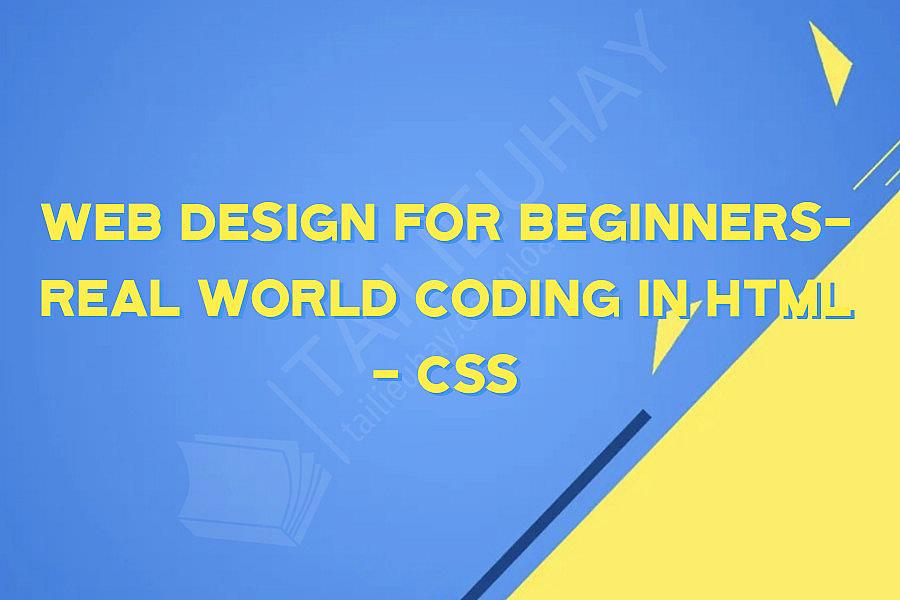Web Design for Beginners- Real World Coding in HTML - CSS

Web Design for Beginners: Real World Coding in HTML & CSS Web design is a constantly evolving field. Whether you're just starting out or are a seasoned veteran, it's important to keep up with the latest trends and techniques. This is especially true for beginners, who may feel overwhelmed by the vast array of tools and technologies available. If you're looking to get started in web design, there's no better place to start than with the basics: HTML and CSS. HTML (Hypertext Markup Language) is the foundation of all websites. It's the code that tells the browser what content to display, how it should be formatted, and where it should go on the page. CSS (Cascading Style Sheets) is a language used to describe the presentation of HTML documents. It allows you to control the look and feel of your website by specifying things like font, color, and layout. So, how do you get started with HTML and CSS? The best way is to dive right in and start coding. There are plenty of online tutorials and resources available, but the real learning happens when you start building your own websites. Here are some tips to help you get started: 1. Keep it simple When you're just starting out, it's tempting to try to build the most complex website you can imagine. However, this is usually a recipe for frustration. Start with a simple, one-page website and gradually add more complexity as you become more comfortable with the tools and techniques. 2. Use a code editor While you can technically write HTML and CSS using a simple text editor like Notepad or TextEdit, it's much easier to use a dedicated code editor. There are plenty of free options available, like Sublime Text or Atom, that will help you write cleaner, more organized code. 3. Take advantage of online resources There are plenty of online resources available to help you learn HTML and CSS. Sites like Codecademy or W3Schools offer interactive tutorials and exercises that will help you build your skills in a fun, engaging way. YouTube is another great resource, with thousands of video tutorials to choose from. 4. Practice, practice, practice The only way to truly master web design is to practice, practice, practice. The more websites you build, the more comfortable you'll become with the tools and techniques. Don't be afraid to experiment and try new things – that's the only way you'll really learn. In conclusion, if you're looking to get started in web design, learning HTML and CSS is a great place to start. Keep it simple, use a code editor, take advantage of online resources, and practice as much as you can. With time and dedication, you'll be building beautiful, functional websites in no time.
Khóa Học Cùng Chủ Đề
After Effects Essentials
Build a Recommendation Engine
Complete ASP.NET Core 0 MVC Single-Page App[The FUTURE]
Complete Blockchain, Cryptocurrency, Wallet Development
Complete Ruby on Rails Single-Page App [The FUTURE]
Getting Started with Maya 2017
Musketeers App online roulette numbers forecasting App
Premiere Pro 101
SQUATS FROM A TO Z
The Maxx You Project How To Capture an Authentic You
12 Small Programs in Java
3ds max making of subway train
7 Scientifically Proven Steps to Increase Your Influence
Adobe Flash CS5 for Beginners
Adsense Masterclass 2018